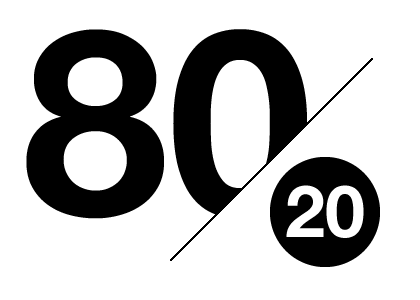 I finished this a couple weeks ago, and haven’t had a chance to put together a follow up post about my take-aways. There are just so many good things to say about this book.
I finished this a couple weeks ago, and haven’t had a chance to put together a follow up post about my take-aways. There are just so many good things to say about this book.
I highly recommend it for any entrepreneur, designer, or Google fan. This book did a great job in reverse engineering Google as a company and culture. In fact, Jeff Jarvis talks about several companies that have enjoyed huge success. Companies like Facebook, Twitter, Craigslist, Wikipedia, and Amazon are thriving today because of specific decisions they made. In contrast, he also talks about Apple (the “anti-Googly” approach). He covers several small company case studies as well, like Tip’d.
As a designer, I’d like to talk about the things that resonated to me the most. I took a bunch of notes, but to keep things short and simple, I’d like to talk about the things that struck me, from a design lens:
 1. What problem are you solving?
1. What problem are you solving?
Google takes an engineering approach to product development. They start with trying to solve a problem. As designers, sometimes we get caught up with the grid, beautiful colors, typography, etc… but we forget that ugly non-designed products can be very successful. Take Craigslist for example—it’s overwhelming and ugly, but it solves a problem. It connects buyers and sellers, and only charges corporations and professionals. Sometimes we get too caught up in making things pretty without exploring the real problems, the real barriers, and design gaps. Personally, problem solving (what Google does, and what Jarvis describes) is design. Everything else is cosmetic. Don’t get me wrong, I love things to look sexy, but like the Bauhaus, I believe that form follows function.
 2. The people who are complaining most are your best friend.
2. The people who are complaining most are your best friend.
Jeff Jarvis puts it well, “It’s free advice”. Every time a customer complains about your product, you should reach out to them. Obviously, it’s difficult to cast a net that captures every problem and every complaint, but Jarvis points out that the “conversations are happening” regardless of what you do. If you can create a way to communicate with your users and have a real conversation, you can build a relationship. If you get your users involved with the evolution of your product/service, they will love and trust you. They’ll acknowledge that you’re a company that listens. All designers should go on Twitter and see what people are saying about your brand. Listen, because it’s free advice. If someone’s making a big deal about your products, the worst damage control would be to sweep their issues under the rug. Jarvis states, “All it takes is for one person to create a site called (your-company)sucks.com”. If a movement of people think your product and company suck, they’ll join that forum and spread the word. Social networking empowers people as well. Jarvis suggests that all companies should reach out and create their own forum to host a conversation The goal is to turn negative energy into constructive conversations and real relationships. Everyone, especially you (the designer), should be encouraging more ways for feedback. Get free advice, and use it. Try to find opportunities to collaborate with your users.
 3. Be open. Really open.
3. Be open. Really open.
Obviously you can’t share everything with everyone, but the more open you are, the better. Look at Apple—they’ve enjoyed huge success by opening up their app store (granted, not every app is approved, but they’re moving towards a more open environment). Be open with your product. Be open with your data if you can. Transparency is powerful. If you’re transparent, people will know how you’re using your data, and that builds trust. Even at the company level, people could be more open. Clearspring (the parent company I work for) is open about sharing data internally, which I’ve been told is a huge luxury. This openess has helped me understand our products better, as well as make more informed design decisions.
 4. Gather as much data as possible and use it.
4. Gather as much data as possible and use it.
There are a lot of articles published about how data can sterilize design. While this is true, I don’t think enough designers take advantage of data. Testing should be a part of culture. In the old days, one campaign could go out at a time. Why not test different campaigns to see which one resonates with the audience the most? Obviously, you can advertise outside of the prime time Superbowl—the days of one shot ad spots are fading. Testing can be one of the cheapest ways to see if a product or idea can work. Yes, data can paralyze innovation in the wrong hands… but in the right hands, it help you and your team test and refine your design. Most decisions are based off speculation. While intuition and emotion are key, it can handicap your design potential. Ever design a brochure, website, product, business card before? Try using data, and approach it like a scientist. Yes, we’re designers, but we should also use the other side of our brain. Data is going to be a key ingredient of design in the future… in fact, I predict that more agencies will be looking for designers that are familiar with testing methodologies, as well as being proficient in reading data. Designing pretty stuff isn’t enough anymore. Yes, Douglas Bowman left Google because of their empirical and exhaustive testing methodology… but I’m sure he’s bringing some experience over with him to Twitter, regardless of his unspoken desire to escape it.
 5. Live by the 80/20 rule.
5. Live by the 80/20 rule.
At Google, they spend 80% of their time working on their regular projects, and they’re required to spend 20% of their time on their own Google projects. At Google, innovation is a requirement. This may not help you at becoming an innovative designer directly, since most design agencies will ask that their designers dedicate 80% of their time working, and 20% tracking time. But, watching Google reminds me how to make real time productive. For me, I look at the 80/20 rule as a way to live life, not just work. We’re all really really busy… but the question is, what are we really doing? Most of the stuff we’re doing is just busy work anyway. Hopefully we can carve out 20% of the time and dedicate it to the important stuff that needs to get done… like innovation, meditation, or pondering the meaning of life. I challenge all designers to look at what their doing and ask themselves if 100% of their time is just plain busy work. If it is, carve out 20% and do something real.
Check out a sample “What Would Google Do” here. PS. Thanks Justin for the recommendation.
nice
Sounds like a very interesting book and I like the 80/20 rule, seems like something that can be very useful in everyday work, and in life in general, pehaps something to start working on.
Cheap Viagra Generic Viagra